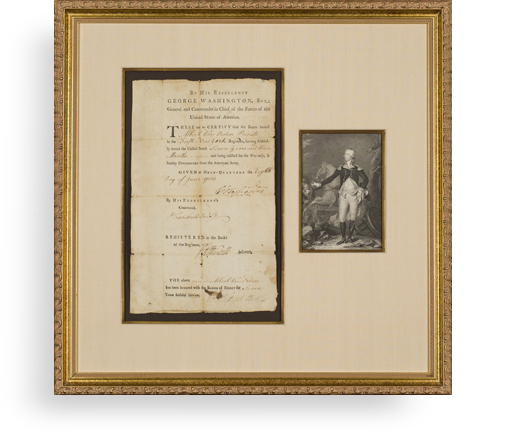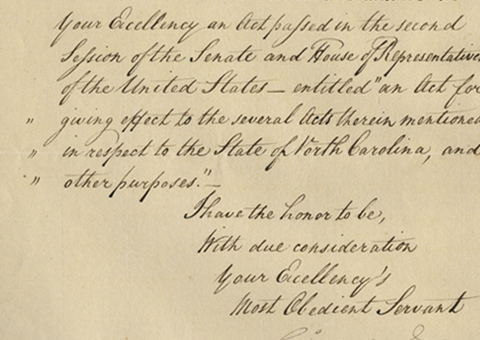Robert Fulton Orders His Famed Steamboat New Orleans to Leave on Its Journey South



He writes one of his partners, John Livingston, telling him that some bills for the steamboat will be paid, and asks for an accounting of what they owe the boats’s workmen
“I have just returned from Albany and have at this post only a moment to say let the boat go down without delay, and write me all particulars of her.”
Robert Fulton was an engineer and inventor who is credited with developing the world’s first commercially successful steamboat, known as the Clermont....
“I have just returned from Albany and have at this post only a moment to say let the boat go down without delay, and write me all particulars of her.”
Robert Fulton was an engineer and inventor who is credited with developing the world’s first commercially successful steamboat, known as the Clermont. In 1807, that steamboat traveled on the Hudson River with passengers from New York City to Albany and back again, a round trip of 300 nautical miles, in 62 hours. The success of his steamboat changed river traffic and trade on major American rivers forever.
Fulton’s name is often associated with that of Robert R. Livingston, as they were partners in designing and building the Clermont in 1807 and on other steamboats thereafter. With Fulton as engineer and inventor, Livingston was the financier and political power behind the projects. They established a monopoly on steam navigation in the Hudson River, where the Clermont had first traveled. John Livingston assisted his brother, Robert, in the steamboat project. In 1808, he also bought from brother Robert the right to operate a steamboat between New York and New Jersey. Thus was John Livingston involved with his brother, Fulton, and the steamboats.
From October 1811 to January 1812, Fulton, along with Livingston, worked together on a joint project to build a new steamboat, the New Orleans, sturdy enough to take down the Ohio and Mississippi rivers to New Orleans. It was built in Pittsburgh, and traveled from there, with stops ultimately at Memphis and Natchez, then on to New Orleans some 90 miles by river from the Gulf of Mexico. This was less than a decade after the United States had acquired the Louisiana Territory from France. The rivers it traveled were not well settled, mapped, or protected. The New Orleans was the first steamboat on the western waters of the United States. By achieving this first breakthrough voyage and also proving the ability of the steamboat to travel upstream against powerful river currents, Fulton changed the entire trade and transportation outlook for the American heartland.
Autograph letter signed, New York, April 16, 1814, to John Livingston in Pittsburgh, about the departure of the New Orleans, which left from that place, down to the south, and paying bills for its imminent trip. “I have just returned from Albany and have at this post only a moment to say let the boat go down without delay, and write me all particulars of her. Belen’s and your other bills already drawn shall be accepted on Monday. Send me an account of the sums due to the workmen who last went out that their wives may be paid. This is Saturday, you shall hear again from me on Monday, one day I consider of importance.”
On July 13, 1814, the New Orleans docked along the river bank in Louisiana. During the night the level of the river fell, and in the morning, the boat rested on a snag. When the boat tried to pull away, the snag left a hole in the boat, and it sank. Fulton’s steamboat company moved the engine and machinery to a new hull, which they also named New Orleans, and she continued on the Natchez steamboat trade.
An interesting and uncommon letter of Fulton about one of his most famous steamboats.

Frame, Display, Preserve
Each frame is custom constructed, using only proper museum archival materials. This includes:The finest frames, tailored to match the document you have chosen. These can period style, antiqued, gilded, wood, etc. Fabric mats, including silk and satin, as well as museum mat board with hand painted bevels. Attachment of the document to the matting to ensure its protection. This "hinging" is done according to archival standards. Protective "glass," or Tru Vue Optium Acrylic glazing, which is shatter resistant, 99% UV protective, and anti-reflective. You benefit from our decades of experience in designing and creating beautiful, compelling, and protective framed historical documents.
Learn more about our Framing Services













































































































